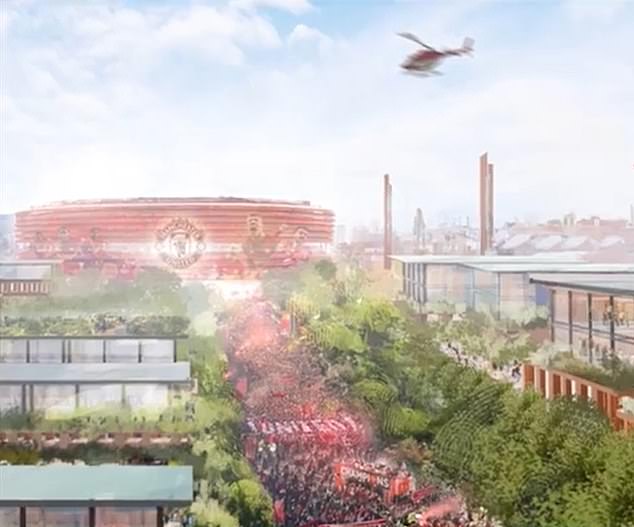Manchester United is gearing up for a significant transformation with the unveiling of new images for their ambitious stadium redevelopment project.
The proposed regeneration aims to create a modern venue that can accommodate up to 100,000 fans, positioning the club for future success while preserving its rich history.
Economic Impact Report Released
Recently, the Premier League club released an economic report detailing the potential benefits of regenerating Trafford Park. Central to this initiative is the construction of a new stadium, projected to cost around £2 billion.
United has promised that this new venue will be world-class, featuring state-of-the-art facilities for players and fans alike.
A Glimpse of the Future
The computer-generated images offer a sneak peek into what the new stadium could look like.
Visuals showcase a circular design adorned with the iconic Manchester United badge, making it a striking landmark.
A bird’s-eye view reveals a grand roof structure, while another image captures fans illuminated by red lights as they make their way to the turnstiles.
This pathway is reminiscent of Wembley Way, aligning with minority owner Sir Jim Ratcliffe’s vision of creating a “Wembley of the North.”
Preserving the Legacy of Old Trafford
As part of the redevelopment, the club is committed to preserving Old Trafford’s historical significance.
They plan to establish a heritage focus group to ensure that important elements of the old stadium are maintained, even if it means tearing it down.
The historic Holy Trinity statue, honoring legends like George Best, Denis Law, and Sir Bobby Charlton, will be included in the new designs, symbolizing the club’s deep-rooted heritage.
Major Economic Benefits Expected
According to a study by Oxford Economics, the regeneration project could inject a staggering £7.3 billion into the UK economy each year.
The analysis suggests that the plans could lead to the creation of 92,000 new jobs, 17,000 new homes, and attract approximately 1.8 million visitors annually to the area.
A Collaborative Approach
Interestingly, Manchester United has decided against seeking public funding for the new stadium.
Instead, they are advocating for a public-private partnership to focus on enhancing infrastructure and regeneration efforts, particularly in transport.
During the recent Labour Party Conference in Liverpool, club officials presented detailed models of the proposed plans, emphasizing the substantial economic boost the project would provide to the region, stretching from Old Trafford to the BBC’s MediaCity.
Future Developments Ahead
Foster + Partners, the architectural firm behind the design, will explore how to maximize the surrounding land for various uses, including residential, entertainment, and educational spaces.
As the project progresses, the recommendations from Manchester United’s regeneration Task Force, based on the findings from Oxford Economics, will play a crucial role in shaping the future of the club and its community.
This exciting development is not just about a new stadium; it’s about revitalizing the entire area and ensuring that Manchester United continues to be a pillar of the community for years to come.
